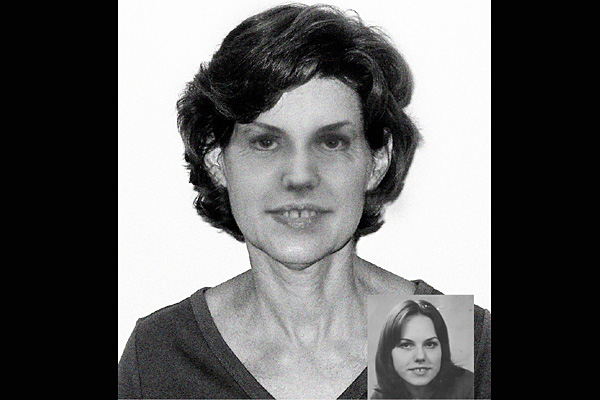

Above right - Age enhanced photo of Lydia released in 2010 by the AFP
German resident Lydia Martha Notz, would be 55 this year and had been living in Brisbane since September 6, 1976.
Lydia was last seen at a friendís residence in October 1976 before leaving a note saying she would return in a week. She has not been seen since.
Year of Birth: 1955
Eyes: Hazel
Hair: Brown
Height: 147cm
Complexion: Fair
Build: Slim
Peculiarities: Nil
Circumstances: Lydia Notz was last seen at a friendís address in Chapel Hill, Brisbane on 31 October 1976. She left a note saying she would return in about a week, however she has not been seen since. Lydia Notz was a resident of Germany before arriving in Brisbane on 6 September 1976.
Could this image unlock one of Brisbane's most enduring
mysteries?
COURTNEY TRENWITH - Brisbane Times
March 3, 2010As the case files on a missing person age, so too does their subject, making the task of finding them that much harder.
But where police in years gone by have been unsuccessful, today's investigators are hoping the latest technology will help solve enduring mysteries and bring peace to anguished families.
For the first time, the Australian Federal Police is using new age-progressing technology to turn outdated photographs of a missing person into realistic portraits of what they may look like today.
The forensic imaging technique has given new hope for the solution of one of Brisbane's oldest missing person cases - that of Lydia Notz.
Ms Notz was 21 years old when she disappeared in 1976.
The German woman had been in Brisbane less than two months when on October 31 she left a note at her friend's Chapel Hill home to say she would return in about a week.
More than 33 years later, her case file has been given new life in the form of an aged-progressed image of Ms Notz, who would be 54.
In constructing the picture, AFP officers relied on a photo of Ms Notz about the time she disappeared and then applied special forensic imaging techniques to add wrinkles and skin-ageing qualities.
The finer details were worked out following discussions with Ms Notz' family about her preferences on jewellery, clothing colour and hairstyles.
The end product, as well as the original picture relied on for more than three decades, is being flashed around the country with similar images of five other long-term missing persons in Australia's first missing persons' poster using age-enhanced images.
AFP Assistant Commissioner Mandy Newton said officers were trained in the revolutionary software in the United States last year.
It had the potential to help find 1600 Australians who had been missing for more than a year.
"It was identified that there is a low success rate for locating long-term missing persons and one reason for this was the lack of age-progression capacity," Ms Newton said.
"I hope that through this initiative there will be a higher resolution and location rate for those persons profiled."
The technology came to prominence in May last year, when an age-enhanced image of missing UK girl Madeleine McCann was released around the world.
Madeleine disappeared a few days before her fourth birthday in May 2007 during a family holiday in Portugal.
The digital image of her aged six failed to spark any credible leads in the investigation.
Ms Newton said the technology would be applied to a dozen Australian cases each year, to make an age-enhanced poster every six months, in addition to the biannual poster that profiles 16 missing persons.
The images would be updated every five years for adults and two years for children, the AFP says.
The technique is most successful in adult cases, where individual features are more matured and prominent.
When applied to children, officers rely heavily on family reference photographs.